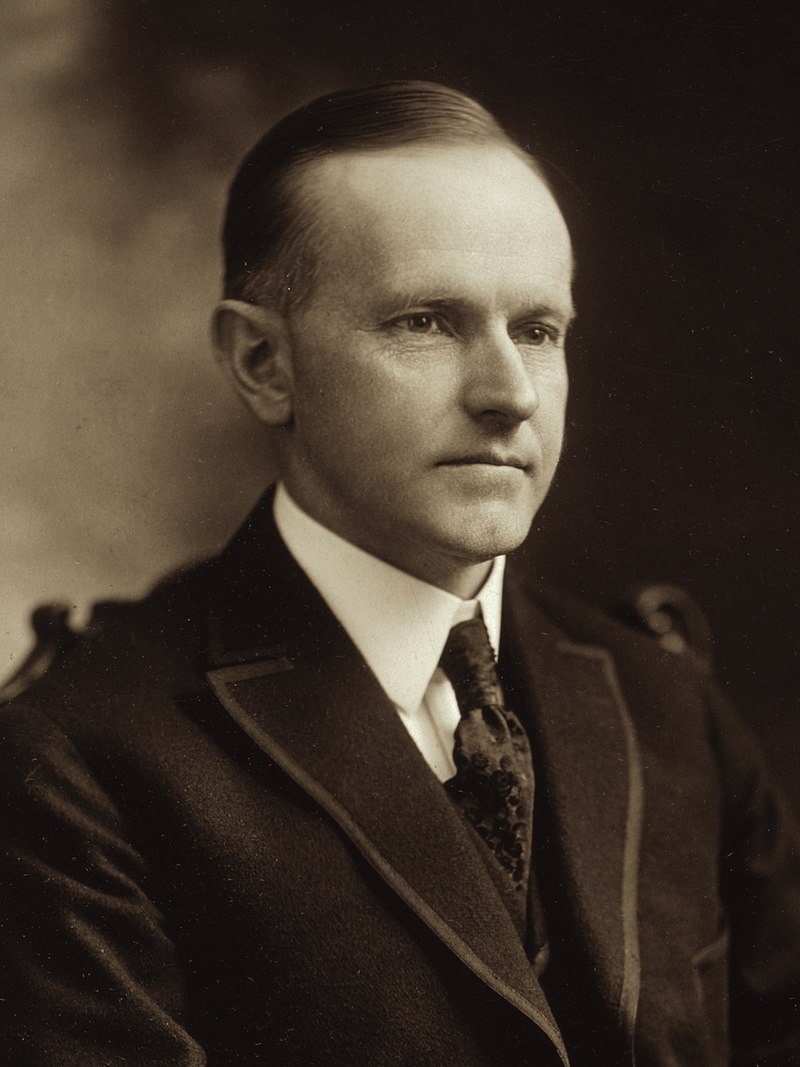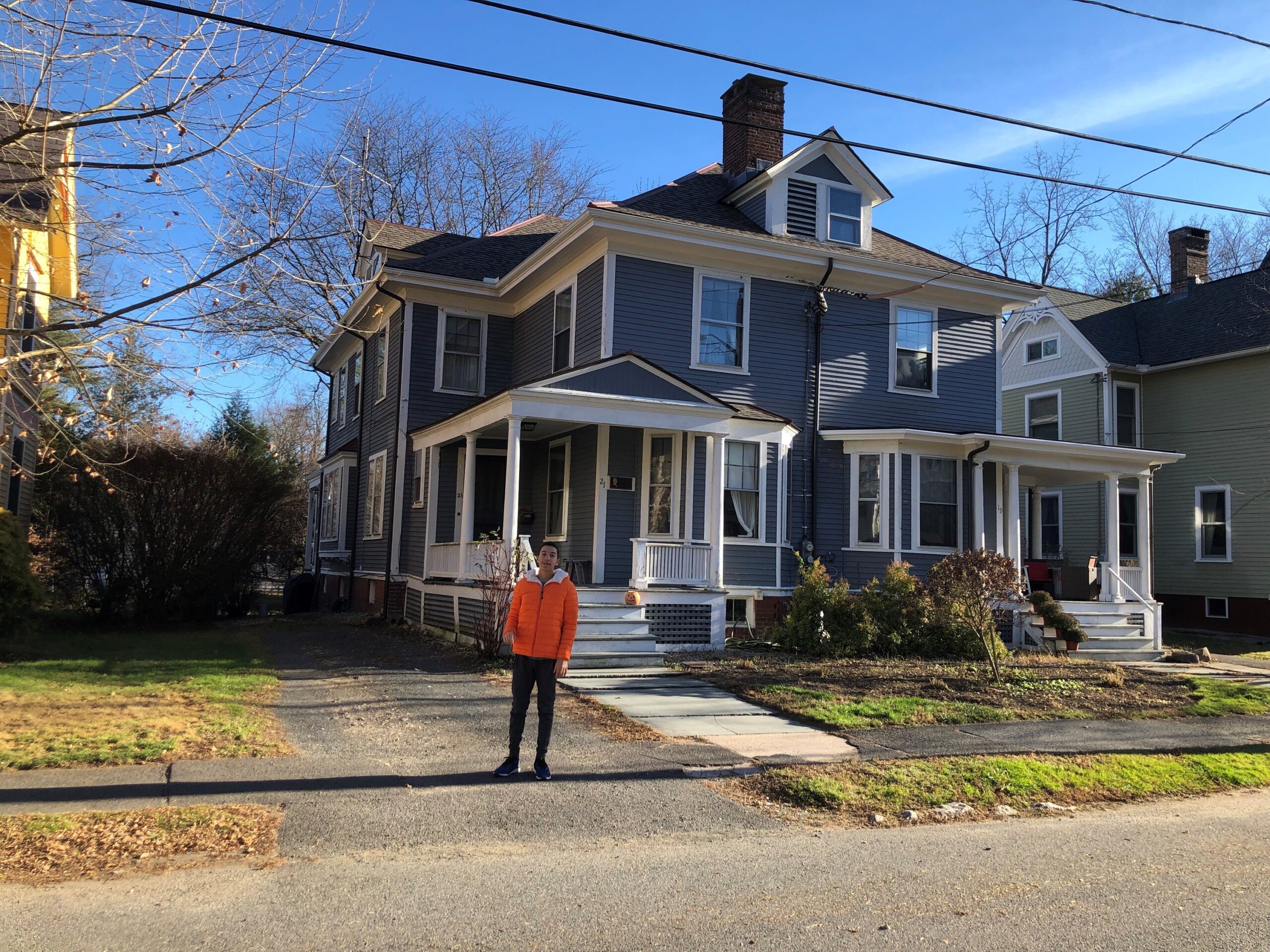 Calvin Coolidge was the 30th president of the United States serving from 1923 to 1929. He was famous for being a quiet man and was nicknamed “Silent Cal.” Coolidge led the country during a period of rapid economic growth and social change known as the “Roaring Twenties.” Shortly after he left the presidency the stock market crashed and the country entered the Great Depression.
Calvin Coolidge was the 30th president of the United States serving from 1923 to 1929. He was famous for being a quiet man and was nicknamed “Silent Cal.” Coolidge led the country during a period of rapid economic growth and social change known as the “Roaring Twenties.” Shortly after he left the presidency the stock market crashed and the country entered the Great Depression.
John Calvin Coolidge Jr. was born on July 4, 1872 in Plymouth Notch, Vermont. His father was a storekeeper who taught Calvin the puritan values of frugality, hard work, and honesty. Calvin graduated from Black River Academy in Vermont and then attended Amherst College in Massachusetts to study law. In 1897 he passed the bar exam and became a lawyer. He opened his own law firm a year later in Northampton, Massachusetts. Calvin married Grace Goodhue in 1905 and would have two sons, John and Calvin Jr. Since Calvin was very frugal the family lived in half of a rented house even after he became president.
Calvin Coolidge began his political career in 1898 as a member of the Northampton city council. After that, he methodically climbed the ranks, only losing one election. He served as City Solicitor, Clerk of Courts, member of Massachusetts House of Representatives, mayor of Northampton, member of Massachusetts Senate, President of Massachusetts Senate, and Lieutenant Governor of Massachusetts. Finally he was elected Governor of Massachusetts in 1919. As Governor, he became famous for his actions during the Boston Police Strike. Coolidge brought in the state guard to restore order, fired the police officers who went on strike and gave the jobs to unemployed World War I veterans. He said “There is no right to strike against the public safety by anybody, anywhere, any time.”
Calvin Coolidge was chosen as the running mate for Warren G. Harding in the 1920 election. They won by a lot and Coolidge became Vice President. On August 2, 1923 President Harding died suddenly. Coolidge was in Vermont while this happened and his father would administer the oath of office to make him the new President. Coolidge served the remainder of Harding’s term and was elected in 1924 to continue to be the president.
During the early part of his presidency Coolidge cleaned up the scandals from the previous president such as the Teapot Dome Scandal. He would then focus on cutting taxes, reducing spending, and using surpluses to reduce debt. He cut regulations for business and believed that if businesses were successful the whole country would benefit. He said, “The chief business of the American people is business.” The economy and stock markets boomed during his presidency. Many referred to this era as the “Coolidge Prosperity.” During his presidency, he signed the Indian Citizenship Act, giving full birthright citizenship to Native Americans.
Coolidge chose not to run for president again by announcing, “I choose not to run again in 1928”. After his presidency, he returned to Northampton Massachusetts where he published an autobiography and wrote a newspaper column. He died of a sudden heart attack in 1933 at the age of 60. Before his death he told a friend, “I feel I no longer fit with these times”.
Calvin Coolidge had some unique records as president. He was the only president to be born on July 4th. Coolidge’s father administered the oath of office to Coolidge in the middle of the night. He was the first president to appear in a movie with sound. He was also the first president to broadcast the State of the Union address on radio. He is the only president to have appeared on a United States coin while living. He also had a pet racoon in the White house during his presidency.
Calvin Coolidge Home at 19 Massasoit Street
This is Calvin Coolidge’s house. He lived on one side of it and other family lived on the other side. Now the house is still up and residents live in the house currently.

Calvin Coolidge Presidential Library
There is a section at Forbes Library dedicated to Calvin Coolidge and his accomplishments. In the room there are such things like the Native American headdress he wore when he passed the Native American Act. There was also plaques of his lifetime accomplishments in chronological order.
